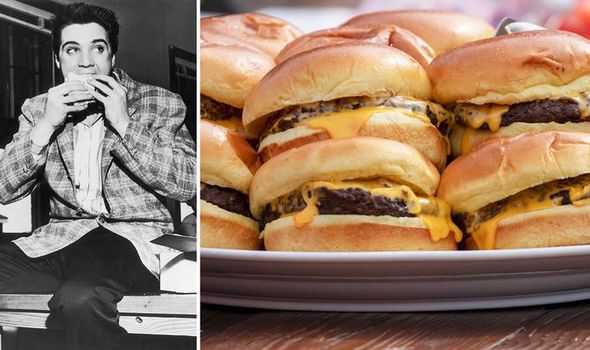The iconic Swanson TV Dinner revolutionized mealtime in the mid-20th century, becoming a cultural symbol and a pioneer in the convenience food industry. Conceived as a solution to a surplus of Thanksgiving turkey in 1953, these pre-packaged meals provided a quick, effortless, and modern dining experience. From its humble beginnings to its enduring impact on American households and beyond, the story of Swanson TV Dinners is an intriguing chapter in the evolution of food culture.

The Birth of a Culinary Innovation

In the post-World War II era, the landscape of American households was changing. Women were increasingly joining the workforce, altering traditional family dynamics. As a result, there was a growing demand for convenient meal options that aligned with the modern, fast-paced lifestyle. It was in this context that the idea of the TV dinner was born.
The inception of the TV dinner can be attributed to the Carl Swanson Company, a prominent food producer. The company’s ingenious solution came about when they found themselves with an excess of turkey after Thanksgiving in 1953. The concept was to create a complete meal, neatly divided into compartments, that could be easily heated and served, offering not just convenience but also a novel dining experience.
The Rise to Popularity

Swanson TV Dinners, introduced to the market in 1954, were an immediate hit. Packaged in aluminum trays, these meals featured separate sections for meat, vegetables, potatoes, and even dessert, all designed to be heated in the oven. The convenience and simplicity of preparation resonated with the public, particularly with the advent of television becoming a central piece of American households. The term "TV dinner" itself became synonymous with convenience and modernity, as families could now enjoy a meal while gathered around the TV, transforming dinnertime into an entertainment experience.

The original TV dinner options were limited, focusing primarily on basic offerings like turkey, Salisbury steak, and meatloaf. However, the concept evolved and expanded rapidly, introducing a wider variety of flavors and cuisines to cater to changing tastes.
Changing Eating Habits and Family Dynamics

The impact of Swanson TV Dinners extended beyond mere convenience. It became a cultural phenomenon, symbolizing the shift in American eating habits and family dynamics. Families found a new way to share meals together, albeit in a more casual, flexible setting, and the TV dinner played a pivotal role in this transformation.
Moreover, the TV dinner's success paved the way for the development of the frozen food industry. Other companies quickly followed suit, introducing their versions of pre-packaged frozen meals, leading to an explosion in the convenience food market.

The legacy of Swanson TV Dinners also impacted popular culture. References to TV dinners appeared in literature, movies, and television shows, solidifying its place in the collective consciousness of the nation. The TV dinner became an iconic symbol of the mid-20th-century lifestyle, representing innovation, convenience, and the changing dynamics of American households.
From Turkey to Global Cuisine

In its early stages, the classic TV dinner comprised basic components: a meat portion (often turkey or chicken), mashed potatoes, peas, and a dessert, usually apple or cherry cobbler. However, as consumer tastes diversified, so did the TV dinner. Swanson began to introduce a broader range of meal options, catering to various dietary preferences and tastes.
The evolution of TV dinners witnessed the inclusion of ethnic cuisines, healthier options, and more gourmet selections. Italian, Mexican, and Chinese-inspired dishes made their way into the TV dinner lineup, offering consumers a taste of global cuisine at home. Additionally, dietary considerations led to the introduction of low-calorie, vegetarian, and organic options, reflecting the changing health consciousness of consumers.
Criticism and Challenges

However, the convenience of TV dinners has not been without its criticisms. Concerns about preservatives, high levels of sodium, and additives have been raised regarding their nutritional value. Critics argue that these meals may contribute to poor eating habits and health issues when consumed regularly.
Furthermore, as societal norms shifted and there was an increased focus on fresh, organic, and locally sourced foods, the TV dinner faced competition from the farm-to-table movement. Consumers began to prioritize healthier and more natural meal options, challenging the dominance of frozen convenience meals.
The Modern Era and Ongoing Relevance

In the 21st century, the landscape of the food industry continues to evolve. The convenience food market has adapted to meet changing consumer demands. Swanson TV Dinners, along with other frozen meal options, have responded to criticisms and changing tastes by offering healthier ingredients, reduced sodium, and organic choices, appealing to a health-conscious demographic.
Online meal delivery services, meal kits, and on-the-go snacks have emerged as competitors, offering convenience without sacrificing nutritional value or taste. The traditional TV dinner, while facing challenges, remains relevant as a convenient, quick meal option for many individuals, especially in moments when time is limited.
The Enduring Legacy of a Culinary Phenomenon

The Swanson TV Dinner holds a special place in culinary history, having redefined the concept of mealtime for a generation. Its impact on American culture, innovation in convenience food, and influence on changing eating habits remain significant.
While it might no longer hold the same novelty as it did in the 1950s, the legacy of the TV dinner endures. Its story is a testament to innovation and adaptation in the food industry and a reminder of how societal changes have continually shaped our culinary landscape.

As the culinary world continues to evolve, the Swanson TV Dinner will always remain an integral part of the narrative, reminding us of the fascinating intersection between convenience, culture, and cuisine.
Conclusion

Swanson TV Dinners have held a unique place in American food culture, symbolizing convenience and innovation in the mid-20th century. From its modest origins to its enduring legacy, the TV dinner has evolved, diversified, and adapted to changing consumer demands. While facing criticism and challenges, it remains a relevant option in the fast-paced world of today, emphasizing the constant evolution of culinary habits and food preferences. The story of Swanson TV Dinners is not just about a convenient meal; it’s a reflection of changing societal norms, cultural impact, and the ever-evolving culinary landscape.



